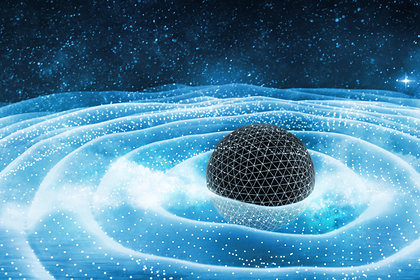The LIGO-Virgo-KAGRA Collaboration has detected 35 gravitational waves in five months 
The LIGO-Virgo-KAGR International Astrophysicist Collaboration in five months – from November 2019 to March 2020 – detected 35 gravitational-wave events. The frequency of 1.7 events is the highest recorded, scientists say. A preprint describing the results of the observations is posted on arXiv.org.
During the previous observation period at the gravitational wave observatories LIGO, Virgo – from April to October 2019 – astrophysicists recorded 1.5 events per week. The total number of gravitational wave events recorded from 2015 to 2020 is now 90. According to one of the research team members, professor at the Australian National University Susan Scott, this “tsunami” represents a “new era” in the detection of gravitational waves. “For comparison, during the first observation period, which lasted four months of 2015-2016, we found only three events,” she notes.
Of the 35 events, 32 are the result of mergers of black holes, the other three are black holes and much smaller objects, probably neutron stars. The most ambitious event was GW200220_061928: as a result of the collision of two black holes – 87 and 61 solar masses, respectively – a black hole weighing 141 solar masses was formed. The first of these objects is also likely the product of the merger of two black holes – the star necessary for its formation would form a pair-unstable supernova, leaving no remnant behind. One of the participants in the collision in the event GW200210_092254 was probably a black hole with a mass of only 2.8 solar – one of the smallest known.